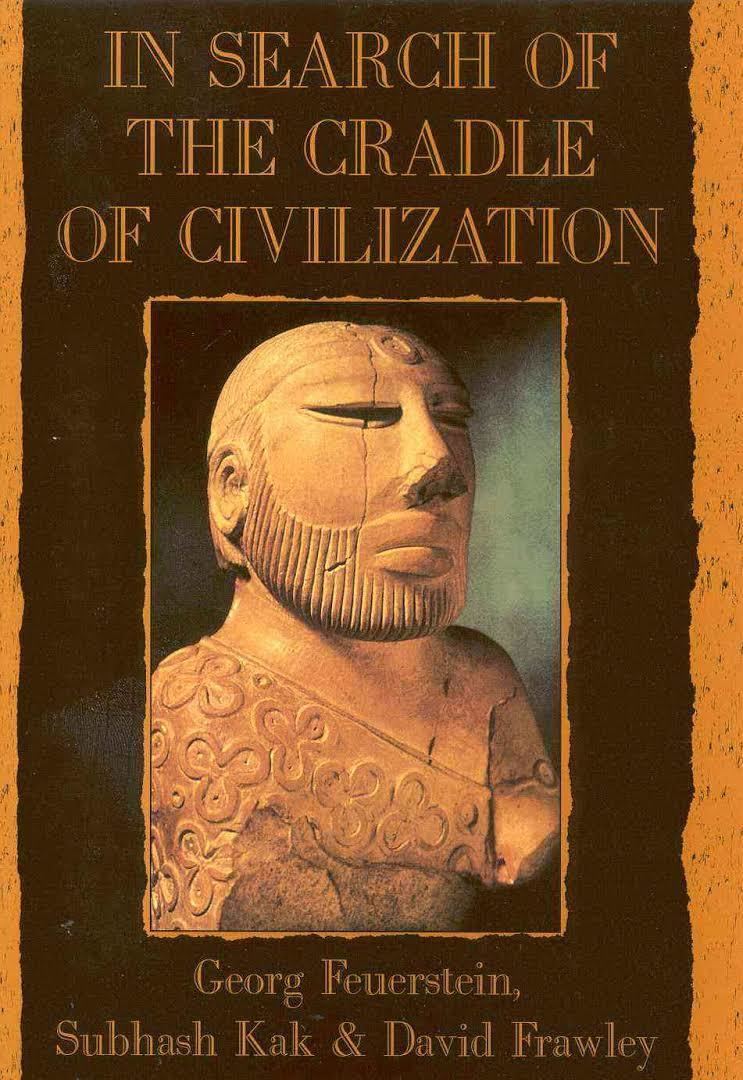7.8 /10 1 Votes
Language English Media type Print Originally published 1995 OCLC 32051035 | 3.9/5 Goodreads Publication date 1995 ISBN 0-8356-0720-8 Subject Indigenous Aryans | |||||||||||||||||||||||||||||||||
 | ||||||||||||||||||||||||||||||||||
Publisher Theosophical Society in America Editors David Frawley, Georg Feuerstein Civilization books Gods - Sages and Kings, The wishing tree, Wholeness or transcendence?, What's So Eastern About Ea, Modern Japan: Origins of | ||||||||||||||||||||||||||||||||||
In Search of the Cradle of Civilization: New Light on Ancient India is a 1995 book by Georg Feuerstein, Subhash Kak, and David Frawley in which they argue against the theories that Indo-European peoples arrived in India in the middle of the second millennium BC (Indo-Aryan migration) and support the concept of "Indigenous Aryans" and the Out of India theory.
Contents
The book was published by Quest Books, a branch of the Theosophical Society in America.
Content
Contradicting earlier views of colonial historians, the authors argue that Vedic civilization grew out of the "Indus-Sarasvati civilization", or "Indus Valley civilization". The authors enumerate fifteen arguments for their revisionist views. Several of these arguments emphasize linguistic, architectural, cultural, agricultural, and technological continuity between Harappan culture, the Vedas, and post-Vedic Hinduism. They also argue that it is improbable that the Vedas were the product of a nomadic or semi-nomadic group. Early opinion considered the Rigveda as containing memories of an earlier nomadic period, whilst the later Vedas were the product of a society native to India. The authors argue that this early viewpoint of the Rigveda is based on mistaken and speculative interpretations, and that in actuality the Rigveda also describes society native to India.
The authors leave open the view that India is the Urheimat (original homeland) of the Indo-Europeans (the "out of India model"), saying that "the Aryans could just as well have been native to India for several millennia, deriving their Sanskritic language from earlier Indo-European dialects."
The authors find continuity in Indian spiritual and religious artifacts from Mehrgarh, one of the first cities in the world, to the present. Historical linguistics does not rule out elements of cultural continuity in spite of language change, so that such claims, likewise, are not in conflict with mainstream opinion. In the view of the authors, however, this alleged continuity rules out the later influx of another ethnic group.
Reception
A review by M. K. Dhavalikar called it a "beautifully printed" contribution to the literature equating Vedic Aryans with the Harappans. Dhavalikar wrote that the authors state that there is no archaeological evidence of a massive invasion or migration, and stated that they make a strong case but that the book fails on crucial points, such as not explaining why chariots are absent from Harappan culture while prominent in the Vedas. Ultimately, the attempt to rewrite history is not convincing. The book was reviewed in Yoga Journal, in Varnam, and on INDOlink.
New age writer Deepak Chopra hailed the book as "ground-breaking".
